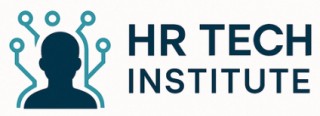
Understanding Professionalism in HR Tech
The Essence of Professionalism in HR Tech
In the realm of human resources, professionalism serves as the bedrock for effective management and performance enhancement. But what does professionalism mean, particularly in HR technology? It's not merely about possessing the requisite skills and knowledge. True professionalism intertwines these capabilities with a set of values that prioritize ethical and effective decision making, communication skills, and employee relations within organizations. Human resources management (HRM) encompasses a dynamic blend of recruitment, selection, training development, and performance management. As organizations strive for success, professionals within HR tech must maintain a deep commitment to these elements, ensuring that they apply strategic human resource planning to fill roles and foster organizational growth. By doing so, they uphold the integrity and standards of their business, even as they leverage innovative tools to solve complex problems and answer frequently asked questions about HR practices. To explore this further, consider how technology aids in managing these responsibilities, from enhancing communication to facilitating continuous learning. Visit our post on navigating the evolving technical workplace to gain insights on balancing technological capabilities with the human element of HR. This integration of soft skills and technology forms the heart of effective human resource management, linking organizational culture with long-term employee success.The Role of Technology in Enhancing Professionalism
Leveraging Technology for a Professional Edge
The landscape of human resource management has been significantly transformed by technological advancements. Professionals in this domain are leveraging these tools to boost effectiveness and foster a higher standard of professionalism in the workplace.
One of the primary ways technology enhances professionalism is through professional development and training opportunities. HR tech solutions facilitate continuous learning and skills development, enabling employees to adapt to evolving job requirements. This focus on employee growth directly translates to improved performance and organizational success.
Moreover, effective communication is vital for professionalism, and technology plays a crucial role here. Communication platforms allow for seamless interaction across different levels of an organization, ensuring that everyone is well-informed and aligned with management's goals.
Efficient Resource and Performance Management
HR technology aids in strategic human resource management by providing tools for efficient resource management. With automation and data analytics, professionals can make informed decisions quickly. This enhances recruitment selection, employee relations, and overall organizational success.
Performance management systems offer employers a comprehensive view of their employees’ work, paving the way for more effective problem-solving and decision-making. This not only helps in maintaining a professional atmosphere but also ensures that the business objectives are consistently met.
For more insights on how to navigate a career in this dynamic field, you might find this resource on successful HR tech careers beneficial.
Professionalism through Technological Interfaces
The integration of technology in HR processes also streamlines workflows, reducing the time and effort professionals spend on mundane tasks. This allows HRM experts to focus on more strategic initiatives, furthering professional development and reinforcing workplace culture.
In summary, the role of technology in enhancing professionalism is multifaceted, encompassing various aspects of HR such as effective recruitment, ongoing training development, and managing employee performance. By embracing these tech advancements, organizations stay competitive and maintain high standards of professionalism.
Challenges in Maintaining Professionalism with HR Tech
Common Hurdles in Upholding Professional Standards
While HR technology has significantly enhanced the professional landscape, maintaining a high standard of professionalism presents its own set of challenges. Human resources management must navigate a complex terrain where technology intersects with human behavior, requiring careful balance.
Balancing Technology and Human Interaction
One of the foremost challenges is ensuring that technology complements rather than replaces human interaction. Professionals are tasked with leveraging tools to enhance communication skills and employee relations while safeguarding the organization's culture and personal touch. Effective communication may become stifled if too much reliance is placed on automated systems, leading to a decrease in interpersonal skills and the neglect of essential soft skills.
Ensuring Alignment with Organizational Objectives
Another obstacle is aligning technology solutions with business goals and strategic human objectives. HR technology should support recruitment selection processes, performance management, and employee development in alignment with the organization’s long-term plans. Professionals need to ensure these tools enhance organizational success, rather than working at cross-purposes with overarching business strategies.
Navigating Technological and Employee Adaptation
The fast pace of technological advancements can lead to challenges in training and development, as employees and managers must constantly adapt to new tools and systems. Organizations need to ensure continuous learning and training development to keep employees skill-ready and motivated, which can be difficult when resources are limited.
Managing Privacy and Ethical Concerns
Integrating technology also poses questions of privacy and data security. Maintaining professionalism means protecting employee data while using tech solutions, which adds a layer of complexity to human resource management. Effective decision making involves balancing these concerns while upholding ethical standards.
Overcoming Resistance to Change
Lastly, resistance to change can hinder the successful implementation of HR technology. Employees, regardless of their role, may resist tools that feel overwhelming or unnecessary. It falls on HR professionals to lead by example, showing how technology can fill performance gaps and solve problems efficiently.
For a deeper understanding of the role of a human resources generalist in navigating these challenges, explore the comprehensive resources available at the HR-Tech Institute.
Best Practices for Professionalism in HR Tech
Implementing Effective Practices in HR Technology
The integration of technology into human resource management has transformed how professionals manage employees, boosting not only efficiency but also the level of professionalism within organizations. Ensuring that technology is used in the most professional manner involves understanding a few key practices.First, continuous training and development play a pivotal role. Providing employees with the necessary skills to effortlessly navigate advanced HR technologies ensures that everyone involved can maintain the professional standard expected in their roles. Regular training sessions allow employees and managers to stay up to date with the latest developments, maintaining their effectiveness in the workplace.
Communication skills are equally vital in upholding professionalism in HR tech. Effective communication facilitates better problem solving and decision making, essential in resolving employee-related issues and fostering positive employee relations. Encouraging open dialogue within the organization helps nurture a supportive community where employees feel empowered and valued.
Maintaining Consistency and Fairness
Consistency and fairness are fundamental to any organization aiming for long-term success. Technology aids in standardizing processes such as recruitment, selection, and performance management, ensuring that every employee is given equal opportunities based on merit. This not only raises the level of professionalism but also strengthens the trust and reliability in the system itself.
In addition, ensuring that organizational culture aligns with technology and its applications can significantly enhance the professional environment. The workplace culture must embrace strategic human resource management, recognizing technology as a vital partner in this evolution.
Fostering a Culture of Continuous Improvement
Developing a culture oriented towards continuous learning contributes to better resource management and improved organizational success. Encouraging employees to engage in ongoing professional development cultivates soft skills essential for adapting to technology-driven changes in HR. By fostering resilience and flexibility, organizations can sustain their professionalism amidst evolving technological landscapes.
Case Studies: Professionalism in Action
Exemplifying Professionalism through HR Technology: Success Stories
As organizations continue to navigate complex business environments, the spotlight on professionalism in human resource technology becomes more pronounced. Delving into case studies provides valuable insights into how certain organizations have successfully leveraged HR technology to elevate professionalism and achieve organizational success.
One prominent example involves a multinational corporation that sought to improve employee relations and overall workplace culture. By implementing an advanced performance management system, the organization managed to streamline its processes, making it easy for employees to track their development and take charge of their own career growth. This transparency enhanced trust between employees and management, fostering a culture of open communication and effective problem solving.
Furthermore, a renowned financial institution invested in training development programs aimed at boosting the soft skills of their human resource team. Utilizing technology to deliver these programs ensured that training was consistent, engaging, and easily accessible. This strategic human resource initiative not only improved the skills of employees but also positively impacted job performance and decision making capabilities across the board.
Another organization demonstrated professionalism by integrating comprehensive recruitment selection tools, ensuring they attracted and hired professionals with the right skills and mindset for the job. This proactive approach to human resources management reduced turnover rates and filled critical gaps with high-performing employees, aligning well with the organization's long-term goals.
These cases highlight the significant role HRM technology plays in bolstering professionalism. As organizations strive for excellence, adopting best practices and learning from successful implementations can drive both individual and organizational success. Embracing a culture of continuous learning and effective communication while leveraging HR technology paves the way for improved performance and sustainable growth.













